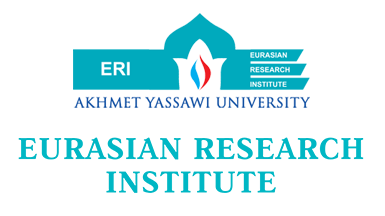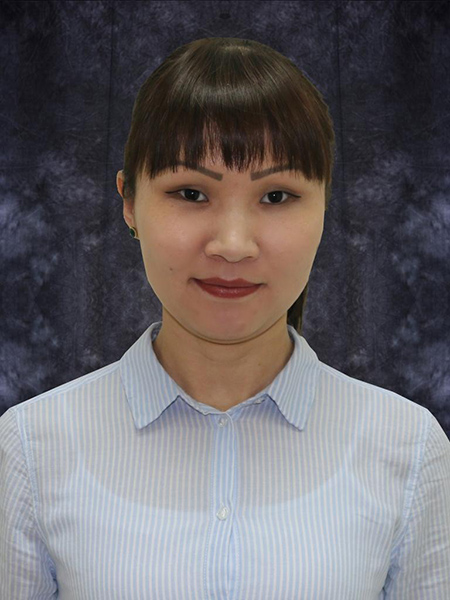
On October 27, 2022, Central Asian leaders gathered in Astana for the first regional Central Asia-European Union summit, alongside European Council President Charles Michel. At the summit, the Central Asian presidents, except for Turkmenistan, which was presented by the Deputy Chair of the Cabinet of Ministers, reaffirmed their commitment to deepening ties with the EU.
Given the “unprecedented geopolitical tensions” and “difficult time for Europe and the wider region,” participants were discussing opportunities to continue their multifaceted and forward-looking cooperation [Putz, 2022a; European Council, 2022]. Particular attention was paid to the importance of Central Asia as a bridge between Europe and Asia. In this regard, the harmonization of Central Asian and EU transport routes, including the Trans-European Transport Network (TEN-T), was mentioned [European Council, 2022]. President Mirziyoyev proposed to create logistics corridors for effective entry into the EU market, in particular through the Trans-Caspian direction [Review.uz, 2022]. President Japarov mentioned the potential for diversification of logistics through the China-Kyrgyzstan-Uzbekistan railway project, which could connect Central Asia with Europe through Turkmenistan, the Caspian Sea, Azerbaijan, and Turkey. President Tokayev mentioned “the need to build bridges, not walls,” emphasizing the importance of connectivity, which in the current reality allows Central Asia to benefit from the suspension of transit through Russia and the increase in China’s transit through Central Asia [Akorda, 2022a]. To this end, the parties supported the organization of the EU-Central Asia Ministerial Conference on Connectivity in November 2022.
Parties mentioned the positive trend of economic cooperation. According to President Tokayev, during the first eight months of 2022, the volume of trade between the EU and Kazakhstan increased by over 40% in comparison to last year’s indicators. The export of food products over the past year increased by 32% [Akorda, 2022a]. However, Central Asian countries primarily export raw materials, crude oil, gas, metals, and other low-value products in comparison to the EU, which exports mainly manufactured machinery and goods. Therefore, President Mirziyoyev proposed ensuring Central Asian products’ compliance with European standards and regulations, as well as conducting joint marketing research to assess the recognition and demand for Central Asian goods in European markets. He also stressed the need for European investments and technologies [Review.uz, 2022]. According to President Tokayev, the EU has invested more than $120 billion in Central Asia over the last decade, accounting for 40% of total foreign direct investment in the region. 70% of these investments were addressed to Kazakhstan [Akorda, 2022a]. For advancing economic cooperation between the parties, President Mirziyoyev proposed to establish a committee for economic cooperation called “European Union-Central Asia” at the level of vice-premiers, the first meeting of which could be held next spring in Samarkand on the eve of the annual meeting of the Board of Governors of the European Bank for Reconstruction and Development. President Mirziyoyev believes that improving the working arrangements between the parties allows for expanding the trade portfolio and the development of transport connectivity, which works in line with the EU’s Global Gateway Initiative [Review.uz, 2022].
Energy cooperation was also widely discussed by participants. Given the current geopolitical situation and Europe’s energy crisis, the EU is interested in diversifying its energy supply. Kazakhstan and Turkmenistan provide a good alternative for that. Ensuring the transportation of energy resources, especially given the situation with the Caspian pipelines, the sides are interested in increasing the capacity of energy cooperation. Green energy was also on the agenda. Sides are interested in strengthening the green component of cooperation. Besides, the parties discussed the experience of the EU in the management of transboundary rivers and issues related to climate change [European Council, 2022].
Projects implemented by Central Asian states to advance the capacity building of Afghan people were also covered. In particular, participants positively assessed the interim results of the EU-UNDP pilot project on the training of Afghan women at Kazakh and Uzbek universities and in special programs at Kyrgyz, Tajik, and Turkmen universities. The significance of deepening cooperation within the Erasmus+ and Horizon Europe programs was also highlighted by Central Asian participants.
In general, the past policy dialogue demonstrates the EU’s intention to follow its policy goals in accordance with the EU strategy on Central Asia 2019. Given Europe’s current geopolitical and energy crisis, the EU seeks to maintain its position in Central Asia while also seeking to ensure its energy supplies from that region. Providing efficient transportation routes and developing new connections are among the priority areas of EU-Central Asia cooperation.
Central Asia, meanwhile, is strengthening its intra-regional ties. Despite the Kyrgyz-Tajik border tensions, the Central Asian region demonstrates more coherence than ever before. Their regular consultative meetings and growing intra-regional ties demonstrate the strengthening of regional unity. Over the past five years, the volume of intra-regional trade has doubled, while with the outside world, regional trade has increased by 54% [US Embassy, 2022]. Only in the last year, intra-regional trade increased by 27% [Akorda, 2022b]. The outgoing year has been fruitful for Central Asia in terms of raising awareness of the region. Attention to Central Asia in world politics has intensified due to the Russian-Ukrainian crisis. Central Asian states have become a frequent platform for various important policy dialogues, in addition to reinforcing the regional approach to ongoing geopolitical tensions. The 2022 SCO summit in Samarkand and the 2022 CICA Summit in Astana provided the perfect platforms for negotiations among the Eurasian leaders. Dialogue meetings are taking place in different regional formats. For instance, similarly to the first EU-Central Asia summit, Russian President Putin had visited Astana two weeks before for the first Central Asia-Russia summit, which had been widely speculated in the media. In September 2022, the ministerial C5+1 meeting was held on the sidelines of the U.N. General Assembly with the United States, which announced the new Economic Resilience Initiative in Central Asia with a $25 million fund for sustainable development of the region [Putz, 2022b]. Chinese President Xi Jinping chose Astana and Tashkent as his first foreign trips since the pandemic. Turkish President Recep Tayyip Erdogan attended the Organization of Turkic States Summit in Samarkand, indicating his intention to capitalize on the region’s geopolitical boost. Thus, Central Asia has become an alternative for displaying foreign policy ambitions of regional leaders and balancing geopolitical tensions caused by the Russian invasion and anti-Chinese sentiment in the West.
The European Union also recognizes the critical importance of Central Asian states in connection with the sanctions against Russia. Despite the risk of supporting Russia’s attempts to circumvent sanctions, the EU understands that any restrictions on Central Asia might push them closer to Russia and China. Furthermore, Central Asia has emerged as a major destination for European businesses looking to relocate from Russia [Satpayev, 2022].
The European Union itself faces an unprecedented level of tensions related to the Ukrainian crisis. Besides the geopolitical risks, the EU is facing an unprecedented energy crisis due to the suspension of Europe’s dependence on Russian coal, oil, and gas. At the same time, the energy crisis, which will undoubtedly have consequences in the coming years, has boosted EU cohesion [FT, 2022]. Accordingly, despite the risk that the EU’s unity will be shaken by the energy crisis, there is a good chance that the ongoing challenges will help to revitalize the European order and change the EU’s overall external approach.
For Central Asia, it is clear that the EU is interested in enhancing cooperation with the region, especially in the fields related to energy and raw materials. The past policy dialogue once again emphasized that the EU is keeping an eye on the region and aiming to develop practical cooperation. The shift from the strategy of promoting European values to expanding economic cooperation with Central Asian states demonstrates the practical orientation of the EU’s interests in the region. Central Asian states, by deepening intra-regional cooperation and continuing their innovative transformation also strengthened their positions in Eurasian affairs.
References:
Akorda (2022a). Kassym-Jomart Tokayev took part in the meeting of the heads of state of Central Asia and the President of the European Council. Retrieved from https://www.akorda.kz/ru/kasym-zhomart-tokaev-prinyal-uchastie-vo-vstreche-glav-gosudarstv-centralnoy-azii-i-prezidenta-evropeyskogo-soveta-279558. Accessed on 8.11.2022.
Akorda (2022b). Speech by President Kassym-Jomart Tokayev at the Fourth Consultative Meeting of the Heads of States of Central Asia. Retrieved from https://www.akorda.kz/en/speech-by-president-kassym-jomart-tokayev-at-the-fourth-consultative-meeting-of-the-heads-of-states-of-central-asia-216535. Accessed on 8.11.2022.
European Council (2022). Joint press communiqué by Heads of State of Central Asia and the President of the European Council. Retrieved from https://www.consilium.europa.eu/en/press/press-releases/2022/10/27/joint-press-communique-heads-of-state-of-central-asia-and-the-president-of-the-european-council/. Accessed on 8.11.2022.
FT (2022). Letter: Energy crisis could be spur to much-needed EU integration. Retrieved from https://www.ft.com/content/b1c45f7b-89a7-43a9-a4b3-c1b03d1d4616. Accessed on 8.11.2022.
Putz, Catherine (2022a). Weeks after Russia-Central Asia Leaders’ Meeting, Europe comes calling too. Retrieved from https://thediplomat.com/2022/10/weeks-after-russia-central-asia-leaders-meeting-europe-comes-calling-too/. Accessed on 8.11.2022.
Putz, Catherine (2022b). US focuses attention on Central Asia with new economic initiative. Retrieved from https://thediplomat.com/2022/11/us-focuses-attention-on-central-asia-with-new-economic-initiative/. Accessed on 8.11.2022.
Review.uz (2022). Speech by President Shavkat Mirziyoyev at the first summit in the “Central Asia – European Union” format. Retrieved from https://review.uz/post/vstuplenie-prezidenta-shavkata-mirziyoyeva-na-pervom-sammite-v-formate-centralnaya-aziya-evropeyskiy-soyuz. Accessed on 8.11.2022.
Satpayev, Dosym (2022). Pawns or players: what is the status of Central Asian countries in geopolitics? Retrieved from https://forbes.kz/process/peshki_ili_igroki_kakov_status_stran_tsentralnoy_azii_v_geopolitike/. Accessed on 8.11.2022.
US Embassy (2022). USAID hosts the 12th Annual Central Asia Trade Forum in Kazakhstan. Retrieved from https://kz.usembassy.gov/usaid-hosts-the-12th-annual-central-asia-trade-forum-in-kazakhstan/. Accessed on 8.11.2022.
Note: The views expressed in this blog are the author’s own and do not necessarily reflect the Institute’s editorial policy
Albina Muratbekova
Senior Research fellow
Dr. Albina Muratbekova is a research fellow at the Eurasian Research Institute of Akhmet Yassawi Kazakh Turkish International University. Albina holds a PhD degree in Oriental Studies from Al Farabi Kazakh National University. During her studies, Albina received fellowships from institutions in China, India, the USA, the UK, Germany, and Switzerland. Her primary research interests cover Central, East, and South Asian affairs; intraregional and interregional cooperation of Central Asian states; China-India relations; and Central Asian politics.

